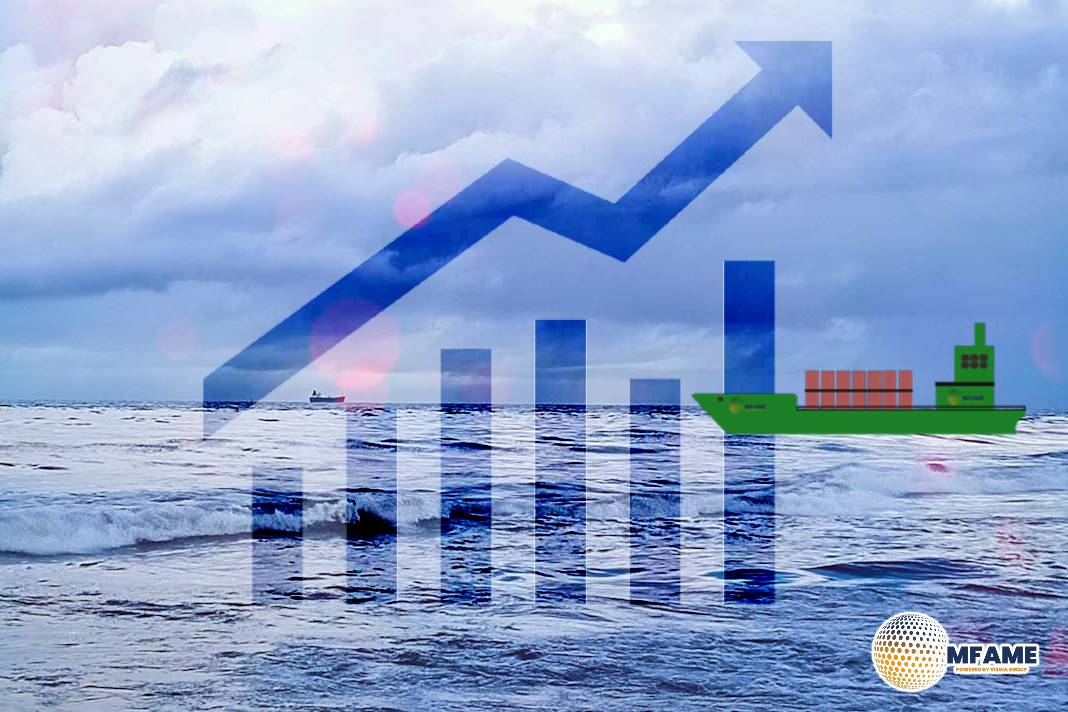- Container shipping lines are set to see another spike in costs next year.
- Suez Canal Authority (SCA) announced that it would increase fees on northbound transits by 15%.
- The increases will not apply to eastbound vessels returning to Asia whose last port call was at the Straits of Gibraltar.
The same hikes, which will take effect on 15 January, also apply to all other types of vessels except ro-ro ships, which will be subject to a 5% increase, sources Loadstar.
Hefty Cost Increases
However, vessels employed on headhaul Asia-Europe trades and the selection of Asia-North America east services which transit via Suez rather than Panama are expected to see hefty cost increases. SCA transit fees vary according to the vessel’s size in terms of beam, draught and tonnage, whether it is laden or unladen and the value of the Suez Canal Net Tonnage, which calculates a vessel’s freight volume capacity.
According to the Hong Kong Trade Development Council, current fees vary between $400,000 and $700,000 per transit, depending on the size of the ship, and thus carriers are looking at a cost increase of $60,000-$105,000 per voyage. Carriers operating Asia-North Europe and Asia-Mediterranean loops will have little option but to soak up the increased costs or, given the bare break-even freight rate levels on both trades, try to pass them on to forwarders and shippers, possibly via a new surcharge.
For the Asia-North America trade, however, the increase could change container supply chain dynamics: a Loadstar analysis of the eeSea liner database showed that, out of 25 Asia-North America east and Gulf coast services, 10 transit Suez and the remaining 15 are via Panama. The increased Suez Canal fees could see that ratio change, or even lead to growth in demand for Asia-US west coast services.
Heavy Congestion
Since the opening of the expanded Panama Canal and the increase in the size of vessels able to traverse its locks, shippers had increasingly shown preference for the all-water route to the US east coast, rather than utilizing west coast ports and moving cargo eastwards across the US by rail. The trend was accelerated during the pandemic, due to the heavy congestion seen on the west coast and fears that another labour dispute would engulf the ports. However, the recent new labour agreement, as well as drought restrictions at the Panama Canal due to falling water levels, has seen container volumes returning to west coast gateways. Volume data for September from analyst John McCown clearly shows the West Coast ports beginning to win market share from their competitors on the Atlantic.
Combined US container import volumes at the country’s 10 largest ports grew 0.04% in September – a marginal increase perhaps, but one which followed 14 consecutive months of volume declines. “The 0.04% increase was made up of divergent coastal range declines. However, it was a reversal of what has occurred over two years where the east/Gulf coast has been the over-performer,” Mr McCown wrote.
Did you subscribe to our daily Newsletter?
It’s Free! Click here to Subscribe!
Source: Theloadstar























